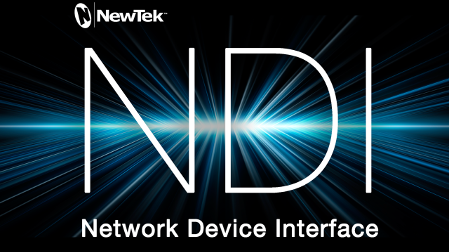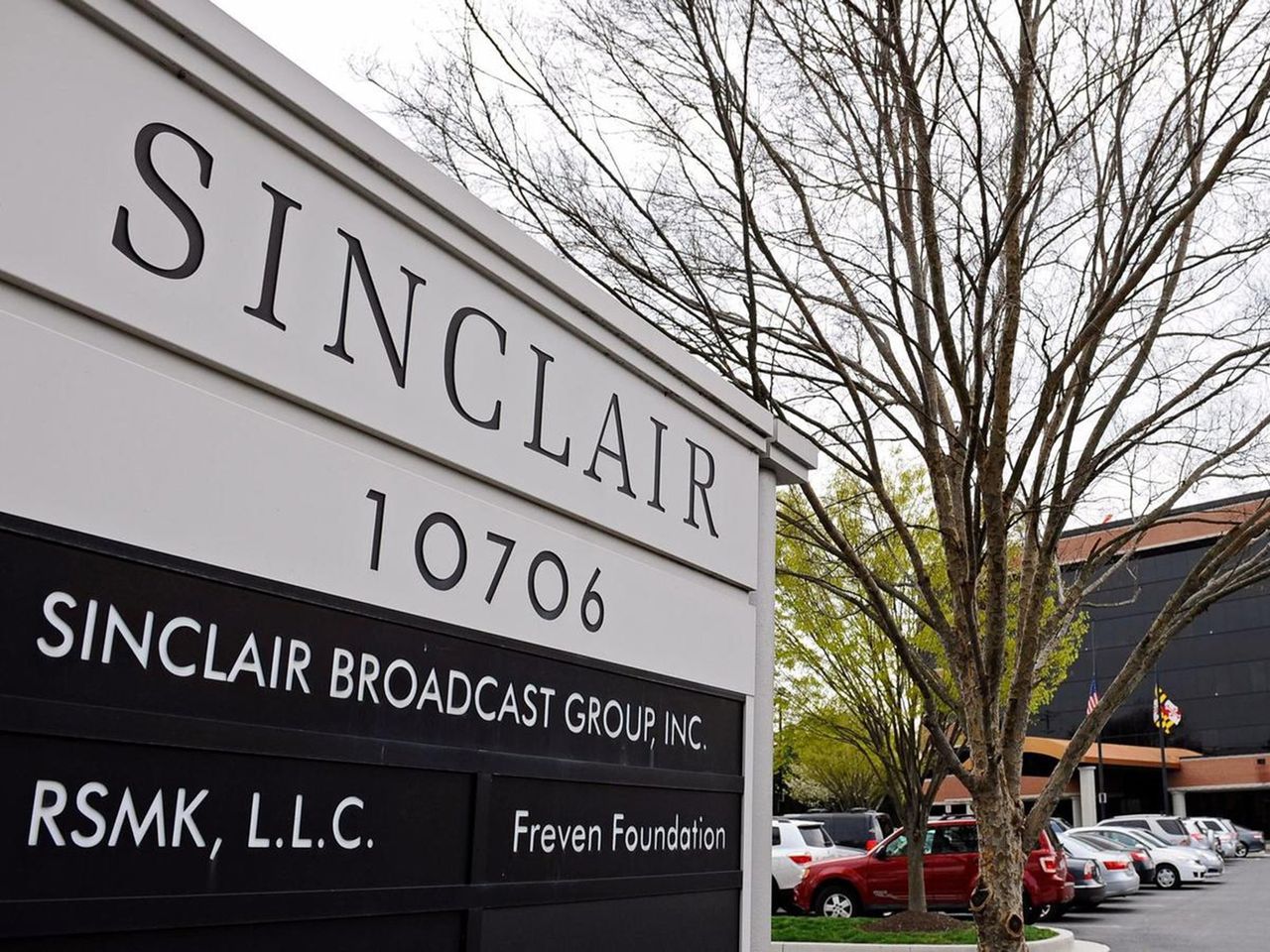NewTek NDI and the Future of Video Over IP
SAN ANTONIO, TEXAS--Just prior to the IBC Show in September, NewTek, a San Antonio, Texas-based provider of live TV production systems announced the introduction of NewTek NDI, a new open standard for live production IP workflows over Ethernet networks. Broadcast Engineering Extra recently spoke with NewTek CEO Dr. Andrew Cross to discuss the current state of video over IP, the standards involved and how NewTek NDI could impact the future of live video production.
BROADCAST ENGINEERING EXTRA:What are the biggest challenges currently for using IP for live production?
CROSS: First of all, there's so many pieces to an IP production, it's a bit hard to answer this with a one line answer. Obviously, you've got the file-based part of it. You've always got B-roll, you've always got titles, you've always got graphics, things like this. Those are probably using IP today, using centralized storage systems already. That part is probably fine.

It's the live video feeds part which is a challenge because I think this is something where there are no good standards. People are using SDI, they're using HDMI and maybe a few people are still using analog video of some kind. That is just something that's remarkably hard to do in IP today.
There are some solutions. You can buy boxes that convert in and out of IP, but you're going to fight those really hard because if you've got two different parts, you aren't guaranteed they're going to have the same latency; it's a mess. If you have some sources coming in in IP and some are not, how do you make sure they're in sync with each other? That's really a difficult problem at the moment.
BEE: Newtek NDI is an open source protocol for using IP and live production. Can you explain the genesis of this standard and why did you pursue this path?
CROSS: If you look at the standards that are out there, like SMPTE 2022-6 and the new TR03 standard, in large part what they are trying to do is take a traditional SDI feed and now put it pretty much one for one over IP. And the other real place where they differ [from NDI] is that you kind of run out of bandwidth on IP pretty quickly because it's not as high bandwidth as SDI. They are looking at three to one compression and there's no standard in either of these things in regards to what kind of compression should be used, although, I think that's the direction everything's going.
Read through the standards and you’ll see what I mean. Imagine if you want to start a company and you’re thinking "OK, IP video's big. So we can do cool things with it. We can make computer applications, we can make cool pieces of technology that talk IP and put video over IP." And now read through one of these standards and try to imagine that without a million bucks behind you how you could possibly implement that in software. Because the problem is these protocols have really, really tight timing requirements.
For instance, in TR03, they need 10 microsecond timing accuracy for each scan line of video. There's just no way that a computer system without customized hardware is ever going to be able to achieve that.

The big benefit of IP is that every computer system in the world can talk with it. You can pipe it around, you can write applications and do things that were never thought of before. If you look at almost any other industry it's going to be the small companies with cool ideas; they're going to revolutionize this industry. Yet, the existing standards are really only taking SDI and putting it over IP and that just doesn't seem where the future of IP video can be. But there is a place for that. So, in many ways I don't see what we're doing is counter in any way to the existing standards.
NewTek comes from the computer end of the spectrum. We've been building real-time computer-based processing systems for 10-15 years, and we've been doing video over IP for 10 of them. Over those 10 years we've worked out how to get IP video in and out in ways that our products can work with and what we actually did with NDI is take that and open it up to everybody and with that, we can bring in a huge number of vendors that already support this.
BEE: Was NDI already available with NewTek products and now it’s just the case that you’re opening it up to everybody?
CROSS: Yes, it has gone by a variety of names. For years, we’ve had the ability to take video from a Vizrt virtual set system, for example, and send it over IP into a NewTek Tricaster. We've done the receiving, they've done the sending. We've been relatively open about giving anybody the ability to send us video. And we've had the SDK for a long time. What we've done now is opening up all parts of this—the sending part is open, but now the receiving part is open. Even those vendors making competitive products.
People making TV monitors or video monitors now can all receive the feeds from this. Right along with this is the ability to find sources on the network, so If you have a laptop running Power Point, you can run the NDI mirroring application on that PC. There are sources available for anybody doing live production work on that local network to see. So our APIs make it very easy to find sources on that network to then bring the video in or to send video out to them.
BEE:There has been a lot of talk about the fact that video switching is hampering the move to IP. Can you comment on how NewTek handles IP within the switching environment?
CROSS: Absolutely. We were actually showing this at our IBC Show booth. We had Tricasters with 12-plus inputs all coming in over IP. And because we've been doing this for some time and we're not starting now, we've got compression and it's all standardized, built into our system. We can work with what is basically baseband compression; it's similar quality to say, ProRes or DNXHD. At IBC, this meant that we had lots of streams over a relatively low bandwidth connection with very low latency on a standard 1 Gbps connection. This is something that we're actually going to have in the market here very, very soon. Think a few weeks, not a few months.
BEE:How will the introduction of New Tech NDI affect the company's future product development?
CROSS: A question I get asked a lot—and is directly related to this—is “why on earth would you take all this effort you've put into IP—working with lots of other companies—and just open that up for everybody else to use?” Ultimately, the reason for that is I think that NewTek believes very strongly that the future of live production is going to move towards IP and quite frankly, we make products that have done this for a long time, and are particularly well suited to this. The faster we can help get IP adoption in the market, the better—the better for us, our customers and really the better for everybody. We see the future of video transport being over IP. It just makes sense for so many reasons. Clearly, you're going to see more and more products where IP is increasingly important in them.
BEE: This is an industry that has been built on standards. Do you think that the standards-making bodies are moving too slow and is that one of the reasons why you introduced NewTek NDI?
CROSS: That's a great question. First of all, I should say our attempt with NDI is not to circumvent standards bodies. I have reached out to everybody who has worked on each one of these different standards and said "Look, we've got this huge installed base. We're making it very easy for people to build products that work over IP. We have probably about a 100,000-plus systems in the market today that can already talk these protocols. Why don't we work together on making this something that's more broadly accepted?" We're not looking to own or control this. We would be very happy to work alongside somebody else to merge what we're doing with them. We're very open to that. Our intent is not to try to lock off part of the market or anything like that. Otherwise, we never would have just opened this up. We want to enable IP video.
Clearly the standards bodies are slowly getting there, but, at least from a NewTek perspective, we tend to come from a different end of the market.
If you were a high end broadcaster and you're looking at an SDI cable and you're saying "How on earth do you get this into IP?" you're going to build an IP solution that looks very much like an SDI cable. Quite frankly, because the people driving the standards bodies have tended to be people who have been driven by the top ends of broadcast, the standards look like that. Now, I'm not being critical of them, in fact that's why I'm saying that I think there's a great opportunity for somebody like us who tend to come from the other end of the spectrum to work with somebody to make these things coexist.
I actually see that NDI, in many ways is not competitive with SMPTE 2022-6 or the new TR03 or any of the others. I think they're trying to achieve a slightly different goal. If you look at almost any area of technology— such as computing—the things that become software-based ultimately tend to win out in almost every area of technology. Custom hardware tends to not be on the winning end of that spectrum over any sustained period of time. So, what we're trying to do with NDI is make something that's very compatible with that.
BEE:When will we start seeing products or technology from other vendors that are compatible with NDI?
CROSS: They already exist. We're going to be releasing tools within a few weeks that take NDI and attach it to any of the commodity capture cards out there. For instance, if you have a Blackmagic card that can access a network input source, if you have an AJA output card somewhere else in the building you can just send these from one place to another over IP. We have more than 100 companies that support this.
Get the TV Tech Newsletter
The professional video industry's #1 source for news, trends and product and tech information. Sign up below.
Tom has covered the broadcast technology market for the past 25 years, including three years handling member communications for the National Association of Broadcasters followed by a year as editor of Video Technology News and DTV Business executive newsletters for Phillips Publishing. In 1999 he launched digitalbroadcasting.com for internet B2B portal Verticalnet. He is also a charter member of the CTA's Academy of Digital TV Pioneers. Since 2001, he has been editor-in-chief of TV Tech (www.tvtech.com), the leading source of news and information on broadcast and related media technology and is a frequent contributor and moderator to the brand’s Tech Leadership events.

